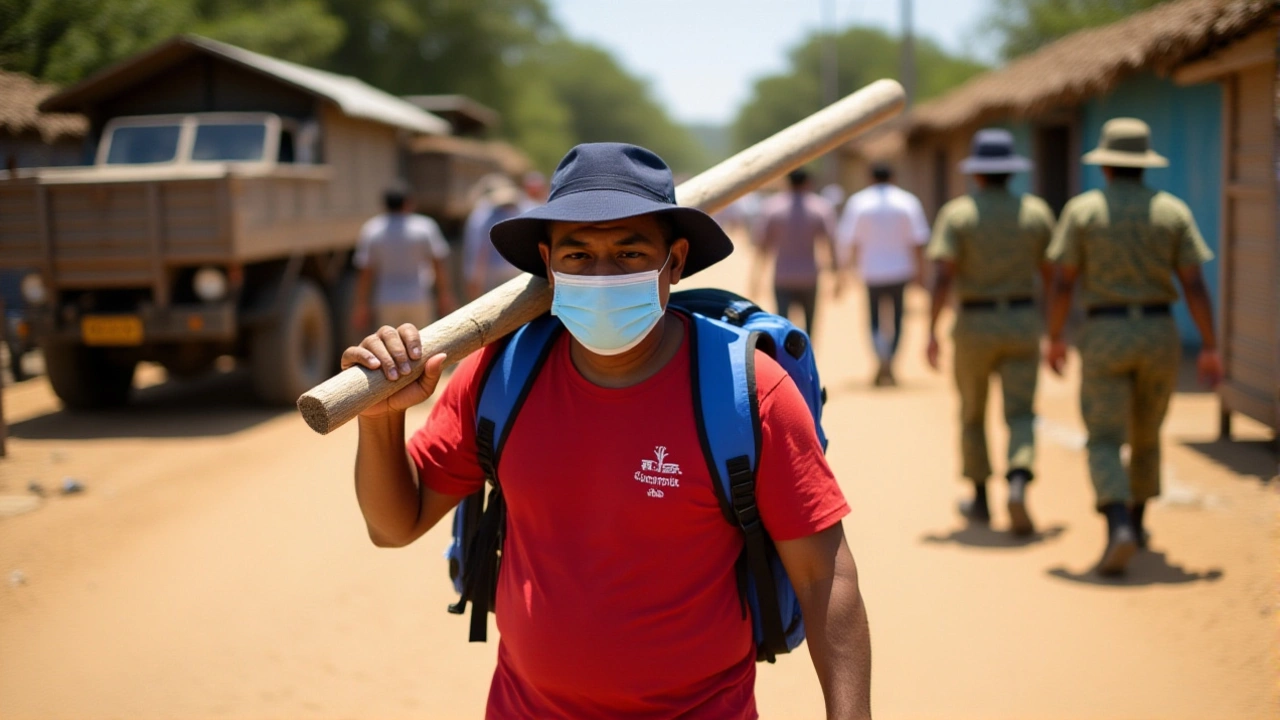On Sunday, November 26, 2023, El Salvador formally asked Panama to establish a humanitarian corridor for migrants caught in the collapse of Central America’s migration routes—a move born not from charity, but from desperation. The request came as a direct response to the seismic shift in U.S. immigration policy under the Trump administration’s 2025 overhaul, which shut down asylum access, ended humanitarian parole, and ramped up deportations to countries like El Salvador, Colombia, and Nicaragua. What followed wasn’t just a drop in northbound migration—it was a reversal. People who once risked the Darién Gap to reach the U.S. are now turning back, often with nowhere to go.
The Great Migration Reversal
Before 2025, the Darién Gap was a deadly gauntlet. In April 2024, nearly 30,000 people crossed it. By April 2025? Just 73. That’s a 99.75% plunge. Colombia, meanwhile, saw irregular entries in Turbo and Necoclí plummet from 27,857 to 34 in the same period. But here’s the twist: while fewer people were heading north, more were heading south. Colombia recorded 7,592 migrants entering from Panama in the first four months of 2025—something never seen before at this scale. These weren’t tourists. They were people who’d spent years in the U.S., now terrified of being deported. Many had tattoos. And they’d heard the stories.
Derly Sánchez, mental health coordinator for Médicos Sin Fronteras (MSF), told reporters in October 2025 that migrants with tattoos were “terrified” of being sent back to El Salvador. “They know people who were deported,” Sánchez said. “They’ve seen what happens.” Gang stigma, once a rumor, had become a death sentence in practice.
Stranded in Mexico, Forgotten by the World
While the Darién Gap emptied, another crisis exploded in Mexico. The European Commission’s Humanitarian Implementation Plan (HIP), dated March 10, 2025, estimated that 270,000 people were stranded in Mexican border towns after U.S. asylum appointments vanished overnight. These weren’t just numbers—they were families sleeping in parks, children going days without clean water, pregnant women waiting in line for food that never came. “The humanitarian conditions are very dire,” the HIP stated bluntly.
By June 2025, MSF had launched emergency operations in Colón province, Panama, handing out hygiene kits: soap, toothbrushes, mosquito nets. But by September, the deliveries stopped. “No migrants arrived for several days,” an MSF field report noted. The silence was louder than the noise of the past.
Panama’s Quiet Crisis
Panama never asked for this. It’s a transit country, not a destination. Yet, with UNHCR downsizing operations in Darién and Chiriquí due to “global funding constraints,” the burden fell to local towns with no infrastructure. Small communities along the Caribbean route—places like Bajo Chiquito and Lajas Blancas—were overwhelmed. What used to be a two-day passage for migrants became a months-long stay. Schools closed. Clinics ran out of medicine. Local leaders began calling it “the invisible crisis.”
According to the UNHCR Panama Factsheet for July–September 2025, around 10,800 refugees and asylum-seekers now live in Panama, mostly from Colombia, Cuba, El Salvador, Nicaragua, and Venezuela. But the country’s laws don’t fully recognize the Cartagena Declaration’s broader refugee definition. In the third quarter of 2025, Panama’s National Commission for Refugee Protection (CONARE) granted refugee status to just 16 people—10 Colombians, 6 Nicaraguans. That’s less than two per month.

El Salvador’s Desperate Bid
Now, El Salvador is asking Panama to open a corridor—not to send people north, but to let them return safely. Why? Because hundreds of thousands of its own citizens, and those of neighboring nations, are now being deported back into a country already crumbling under its own weight. El Salvador’s 2025 Humanitarian Response Plan seeks $66.9 million to assist 818,700 people. As of mid-2025, it had reached just 12.1% of that goal.
Women’s cooperatives in rural El Salvador have become early warning hubs, trained to document threats and track deportees. One mother in Sonsonate told The New Humanitarian in August 2025: “My son came back with nothing but his clothes and a scar on his arm. They told him he was a gang member because of his tattoo. He didn’t even know what a gang was.”
The situation in Colombia has only worsened. The Catatumbo region, bordering Venezuela, reignited into violent conflict in early 2025, pushing even more people toward Panama. In 2023, over half a million people crossed the Darién Gap. Ecuadorians were the second-largest group. Now, they’re turning around.
What Comes Next?
Panama has not yet responded to El Salvador’s formal request. But the pressure is mounting. Regional NGOs are warning that without coordinated action, the southbound flow could trigger a new wave of displacement, poverty, and violence. The U.S. policy shift didn’t just stop migration—it redirected it. And now, the entire Central American corridor is buckling under the weight of its own unintended consequences.
“We didn’t create this crisis,” said a Panamanian official who spoke anonymously. “But we’re the ones holding the door. And it’s starting to break.”
Frequently Asked Questions
Why is El Salvador asking Panama for a humanitarian corridor?
El Salvador is requesting the corridor because thousands of its citizens—and migrants from other countries—are being deported back into a country with overwhelmed services and deep stigma against returnees, especially those with tattoos. With only 12.1% of its $66.9 million humanitarian plan funded, El Salvador lacks the capacity to safely reintegrate returning migrants, many of whom face violence or social exclusion.
What caused the sudden drop in northbound migration through the Darién Gap?
The 2025 U.S. immigration overhaul under the Trump administration suspended asylum access, ended humanitarian parole, expanded expedited removals, and criminalized irregular entry. These policies led to the cancellation of CBP One appointments, leaving 270,000 stranded in Mexico. With no legal pathway left, fewer people risked the Darién Gap, causing crossings to drop from nearly 30,000 in April 2024 to just 73 in April 2025.
Why are migrants now moving south instead of north?
Many migrants who lived in the U.S. for years—especially those with tattoos, criminal records, or undocumented status—feared deportation to countries like El Salvador, where gang stigma is deadly. Others were deported directly from U.S. detention centers and found themselves stranded in Panama or Colombia with no money, documents, or support networks. The southbound flow is a direct result of forced returns and abandoned hopes.
How is MSF responding to the crisis in Panama?
Médicos Sin Fronteras provided mental health services in Bajo Chiquito and Lajas Blancas until local authorities shut down the reception stations due to low migration numbers. In June 2025, MSF launched emergency aid in Colón province, distributing hygiene kits and water to migrants traveling by sea. But by September, operations ceased as no new arrivals were reported for days—highlighting the sudden, silent collapse of migration routes.
Why is UNHCR scaling back operations in Panama?
UNHCR downsized its presence in Darién, Chiriquí, and Panama City due to global funding constraints and organizational restructuring. Despite ongoing humanitarian needs—including mental health crises, lack of shelter, and protection risks—the agency redirected resources to higher-profile emergencies. This left local governments and NGOs to fill the void, often without adequate support.
What’s the long-term impact of U.S. policy on Central America?
The U.S. policy didn’t stop migration—it fragmented it. Instead of reducing overall displacement, it pushed people into more dangerous routes, deeper poverty, and greater vulnerability. Countries like El Salvador and Colombia, already struggling with violence and underfunded services, are now forced to absorb returnees without resources. Without regional cooperation, the cycle of displacement will only intensify, turning Central America into a humanitarian pressure cooker.
